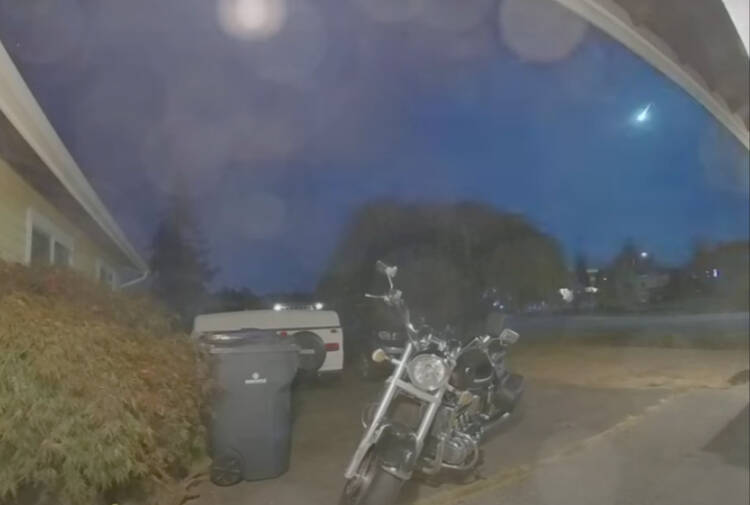A streak of light that flashed for six or seven seconds across western skies Wednesday night was likely a classic bolide in the wake of Halley’s Comet says a Greater Victoria astronomer.
If a meteor is as bright as the full moon or brighter, it’s a bolide or fireball, Dave Balam, with the National Research Council of Canada, told Black Press Media.
In his work, Balam monitors asteroids and comets using three telescopes: the robotic one at the Dominion Astrophysical Observatory in Saanich, one in Calgary built by NASA, and a satellite called NEOSSat (Near-Earth Object Surveillance Satellite).
He’s also the go-to expert on such things for the Friends of the Dominion Astrophysical Observatory which shared a video of the bright streaking light spotted south of Victoria on Oct. 12 around 10:20 p.m.
Balam guesses it was part of the October Orionid meteor shower that runs 30 days finishing in early November. This year’s peak is expected Oct. 21 and 22. “We run through the stream of comet Halley twice a year, it streams trash in its orbital path and we run through it,” he said.
There is also a chance it could be sporadic, he said, “just a bit of flotsam that’s been floating around for billions of years and we just ran into it.”
While it may have dropped some stones, Balam doesn’t recommend rooting around. He noted it fell in mountainous forest, a terrible place to find meteorites – he’s tried.
It’s not dangerous, or even unusual, we get about 10 to 12 bolides a year, Balam said, it’s just most are visible later at night when fewer people are up.
By Thursday afternoon, the American Meteor Society had received more than 140 reports about the fireball seen over British Columbia, Oregon and Washington.
Did you see the fireball? Email your videos to vnc.editorial@blackpress.ca.
READ ALSO: Minor planet named for Tsawout First Nation
christine.vanreeuwyk@blackpress.ca
Do you have a story tip? Email: vnc.editorial@blackpress.ca.
Follow us on Twitter and Instagram, and like us on Facebook.

